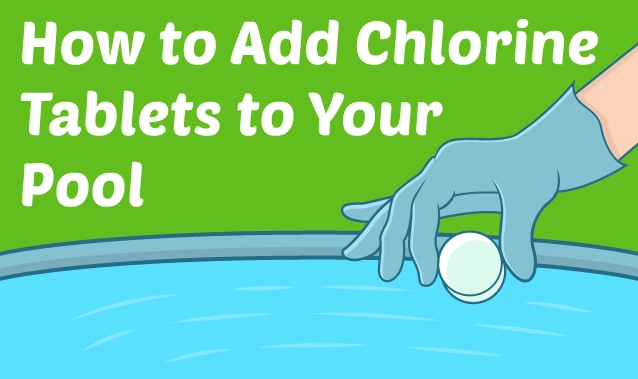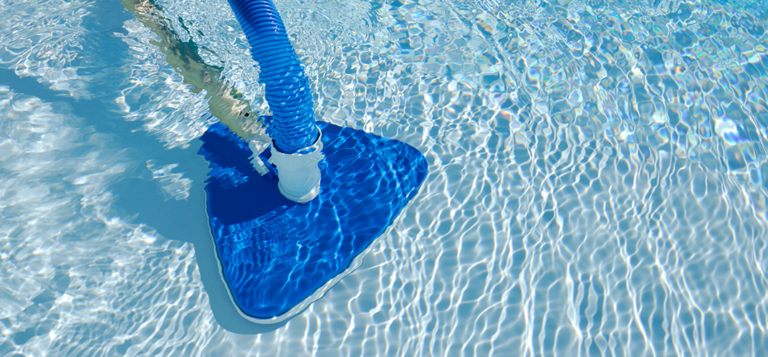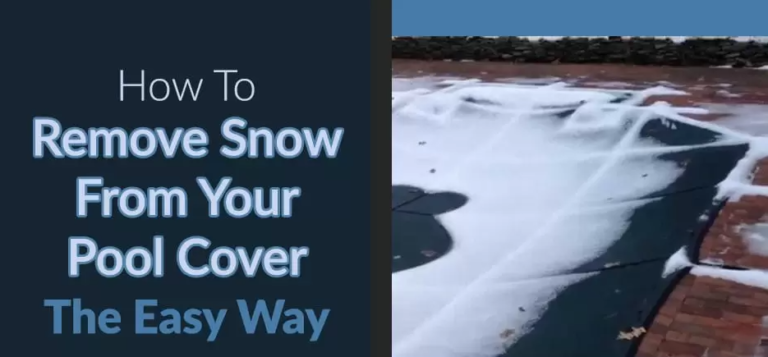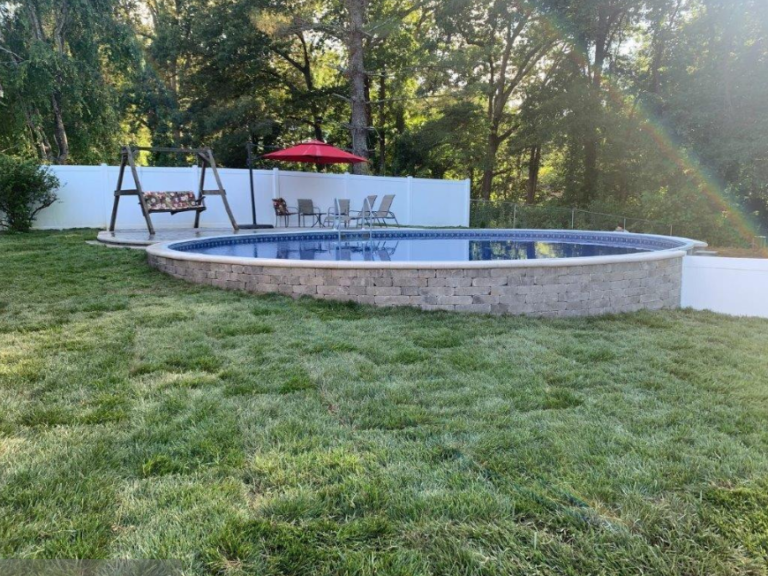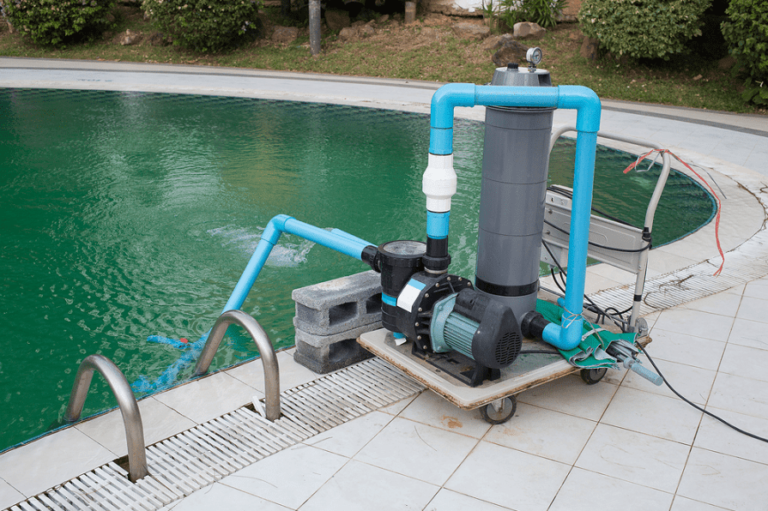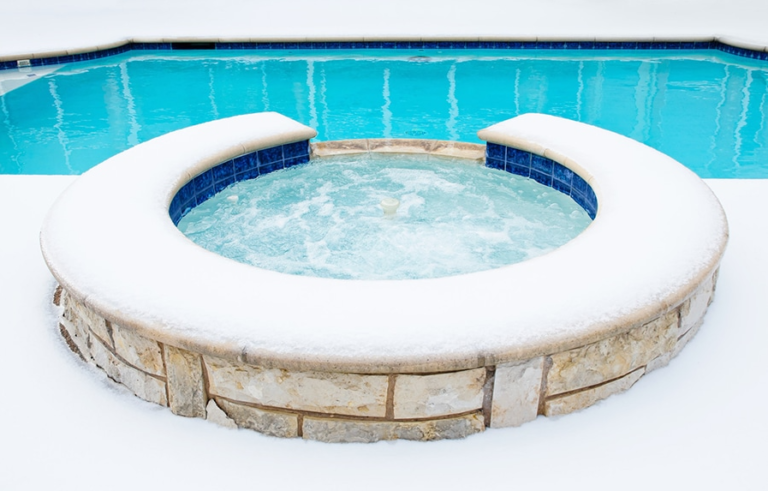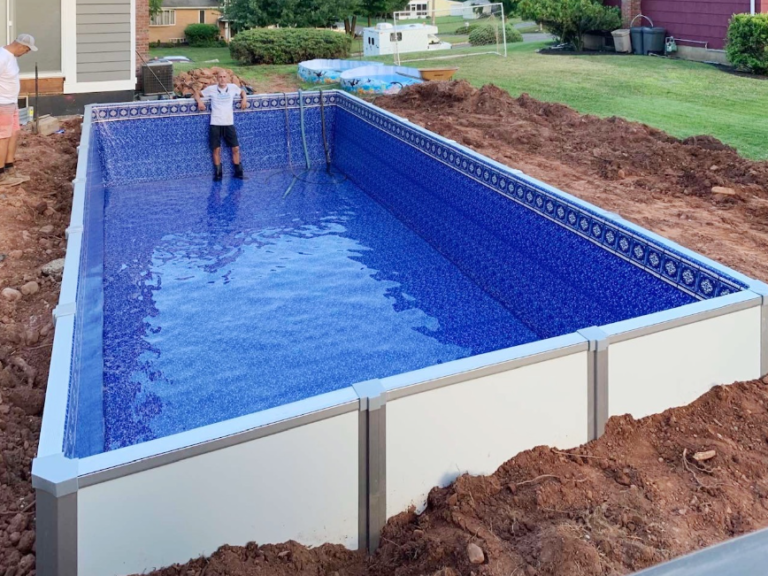Add Chlorine Tablets to Pool
How to Add Chlorine Tablets to Your Pool
Owning a pool comes with fun and responsibility. On the one hand, you can swim whenever you want. You can enjoy a cool, refreshing dip in the summer, or heat the water for a warm and relaxing swim in the fall. And the pool is a great place to get together and spend time with family and friends.
But, if you really want to enjoy your pool, you have to keep it clean right? Because no one wants to swim in a dirty backyard pool.
So that means cleaning the water, cleaning the walls, vacuuming the floor, cleaning the filter, etc. In other words, keep your water clean. But that still leaves the other side of pool maintenance. No matter the shape, size or model of your swimming pool, cleaning your water is always a priority.
While this can be done using chemicals such as chlorine, bromine, or salt, it is a specific form of chlorine that many pool owners are relying on these days. Reliable chlorine tablet.
Whether you’re new to pool ownership or a seasoned pro, we know that keeping your pool free of bacteria and debris is a top priority. But testing your pool water and adjusting your chlorine levels can be a time-consuming task – and that’s after you’ve already spent hours skimming leaves and cleaning pool walls. are!
But the good news is that you can make pool cleaning easier with chlorine tablets. They are pre-measured, fuss-free, and affordable, and like liquid chlorine, they keep your pool clean all year round. But like most people, you’re probably wondering how chlorine tablets work. Do you put them in a floating dispenser or straight into the pool? Can they get into scammers? And how long do they last before you need to replace them? In this guide, we’ll explain what chlorine tablets are, and how they compare to liquid chlorine and show you two easy ways to add them to your pool. To finish, we’ll answer some frequently asked questions, such as how often you should change tablets, whether can you use them to shock your pool, and if they don’t dissolve fast enough. What should be done if it is happening? Let’s get stuck in!
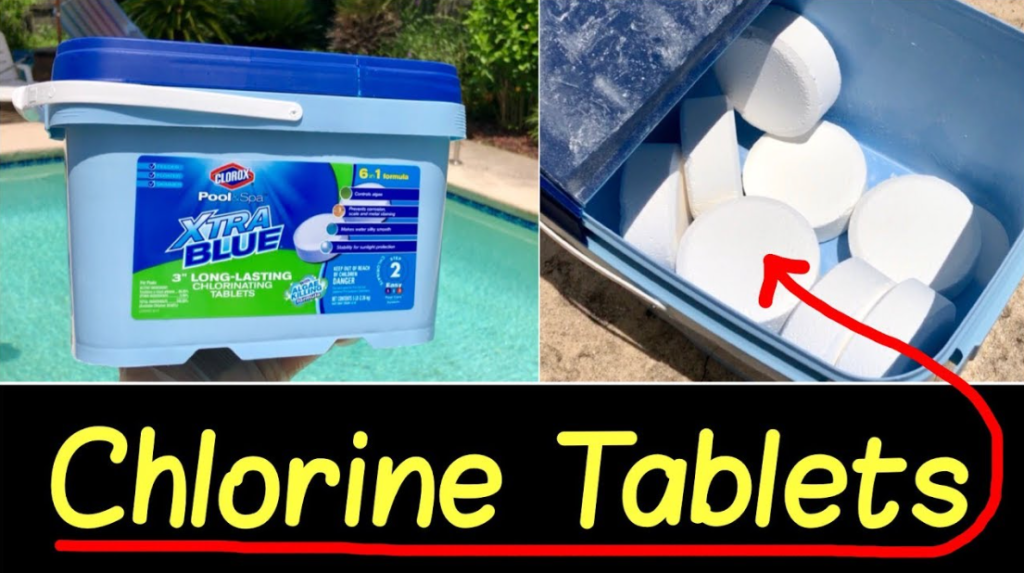
Wait, are tablets the best choice?
Chlorine tablets are one of the simplest, cheapest, and easiest ways to clean your pool water, but as with all things pool chemistry, it’s good to weigh your options.
For starters, chlorine tablets come in stabilized or unstabilized, meaning they either contain cyanuric acid (CYA) or they don’t. CYA helps protect chlorine from the sun’s UV rays, so outdoor pools need this additive to stabilize the chlorine and prevent the sun from burning it all off. Stabilized chlorine tablets (like trichlor or dichlor tablets) are great if you need to increase your CYA levels, but chlorine dissipates, CYA does not. If you continue to use them, you will end up with too much CYA in your water, which can be expensive to fix. Non-stabilized chlorine tablets (cal-hypo tablets) can be used instead, but they also contain calcium which will increase your calcium hardness levels with prolonged use, resulting in a number of problems. There will be a brand new collection.
Finally, depending on how you add the tablets to your pool, high concentrations of dissolved chlorine can damage your pool equipment and surfaces, meaning they aren’t always the safest option.
A high cyanuric acid level can also cause a chain reaction of problems, including inhibiting the effectiveness of chlorine in purifying water, disrupting your test readings, and even damaging your pool plaster. . This means that chlorine tablets are great under the right conditions, but it’s always important to know what you’re putting into your water and be prepared to substitute other, more suitable forms of chlorine if needed. Pool chemical maintenance.
A pool that looks clean is not necessarily clean to swim in. Seemingly clean water can be full of micro-bacteria and other contaminants. This is why products like chlorine tablets exist. As you know, chlorine is what cleans your pool and keeps it sterile and safe.
And in this post, we tell you how to use chlorine tablets in your swimming pool… the right way. Yes, despite their simplicity, there are right and wrong ways to use chlorine tablets. Misusing them can damage your pool, and waste your money – two great reasons to keep reading this post. So let’s take a quick look at chlorine tablets, and what a great way to put them in your swimming pool.
Always add chlorine tablets to your skimmer, floating dispenser, or automatic chlorinator.
Floating dispenser

Floating dispensers are also very easy to use. You simply add the required tablets to the dispenser and let it float throughout the pool. As the tablets dissolve, they will release the chlorine into your water.
One problem is that it can get stuck in one area of the pool and not spread the chlorine evenly. Not only are chlorine floaters easy to use, but they are also inexpensive and now come in many fun shapes and sizes. You simply place your chlorine tablets in the floater (based on the gallons of water in your pool), and it does the work for you. The downside of a chlorine floater is that it is a passive system, so it can sometimes get stuck in one place for a while. As with the skimmer, this can result in a high concentration of chlorine in that one spot, re-damaging your pool in that spot. Another way to add chlorine tablets to your pool is with a small floating tablet dispenser. It can fit 3 x 200 g tablets and provides a controlled release of chlorine over five days. Alternatively, you can get a SmartPod tablet dispenser that has the same features and the ability to flip over when it’s empty, letting you know when you need to replace your tablet.
Another option is the Multi-Action Chlorine Floater, which is a floater and tablet combo. Unlike traditional dispensers, you don’t need to add pills to the unit. The floater is just dropped into the pool and can sterilize your water for up to a month, depending on the size of your pool and how often it is used. It then floats on its side when it needs to be replaced.
Floating dispensers are inexpensive and easy to install. You just put the tablets in and pour over the water. The dispenser then relies on water circulation to circulate around your pool. Water then flows through the dispenser and dissolves the tablet. Adjustable vents also allow you to control the amount of chlorine released. The only problem with floating dispensers is that they can get stuck in skimmers, behind stairs, steps or pool toys. If it gets stuck, shift it to a telescoping pole or consider tying it with some string. Also, remove someone from the pool before swimming. Children may mistake the chlorine tablets for toys and accidentally touch them, causing burns or injuries.
Chemical feeder
The most permanent option is a chlorine dispenser, or chlorinator, which will keep your chlorine evenly and consistently at the level you set the equipment to, again between 1-3 ppm at most. Chlorinators are separate devices that usually run at the filter site, and may use granular chlorine, chlorine tablets, or liquid chlorine depending on the device selected. With a chemical feeder you should not experience any increase in chlorine levels or acidity, nor should you experience low or zero readings that could result in the growth of bacteria and green algae. You’ll still want to test your water daily to ensure proper levels, but an automatic chemical feeder provides more consistency and less daily chemical maintenance.
Remember, do not sprinkle chlorine granules or tablets directly into the water. This is hazardous to the health of swimmers and will result in increased chlorine levels that will damage your pool. Struggling with chlorination of your pool? Contact us today to find the chlorine tablets and dispersion systems that are right for you.
Automatic chlorine feeder
This option is the most expensive of the two, but it is a safe and reliable way to add chlorine tablets to your pool. The tablets are simply loaded into the automatic chlorinator and you control the speed at which the tablets dissolve and the amount of chlorine released.
Automatic chlorinators work with your filtration system and need to be installed by a pool technician. They can be inline, which means they are installed in the pool’s water return line, or offline, which means they are retrofitted to a separate line.
Maintenance is minimal with an automatic chlorinator. All you have to do is add the tablets, set your dial to 1-3 ppm and let the unit do all the work. And because it provides an even distribution of chlorine, you won’t get too much chlorine in one particular area. Just set and forget!
Pros
- Easy to use
- Restoration of Kim
- Holds multiple tablets.
- Uniform and accurate distribution of chlorine
Cons
- To establish Kin Bayeshpainthive
Automatic chlorinator
The most effective way to chlorinate your pool is with an automatic chlorinator. You simply put the chlorine tablets in the chlorinator and set it to chlorine. You’ll need to buy this equipment, but let’s say you have direct control and feed rate, and you’ll note the chlorine.
Skimmer
Adding chlorine tablets to your skimmer is one of the best places to supply chlorine, and it’s also one of the easiest. No hassle and no extra equipment required.
With a continuous stream of water for most of the day, it offers an excellent place for chlorine distribution. This will disperse the chlorine fairly evenly. n The Skimmer
It has long been believed that the ideal place to put your chlorine tablets is in your pool skimmer. As the water is filtered, it will disperse the chlorine and keep your water at a proper level between 1-3 ppm. This is true, as long as the filter is running, but most filters are only running 8-12 hours per day. The problem with using a skimmer as your dispersal system is that the pellet continues to dissolve when the filter is clogged.
Why do pools need chlorine?

Why do swimming pools need to be chlorinated using chlorine tablets?
As mentioned earlier, chlorine is what keeps your pool safe and swimmable. It disinfects your water and kills germs, bacteria, and other contaminants that could otherwise pose a health hazard.
But for those of you who want the nitty-gritty details, here they are:
Chlorine’s cleaning process begins when it enters your pool. As it begins to dissolve in water, chemical decomposition occurs. During these breakdowns, two main compounds are formed: hypochlorous acid and hypochlorite ions. Both compounds actively purify your water by oxidizing pollutants in your pool. But when the hypochlorite ions are more “slow-release” and oxidize over a longer period of time, hypochlorous acid begins to act on contact. Together, they keep your water sterile and safe for swimming in a variety of conditions.
So if you’ve ever wondered how it’s possible that a bunch of people can swim in a rectangle of water without getting sick, you can thank chlorine for that. Chlorine is the most important factor when it comes to keeping your pool clean and sterile. It can be found in tablets, granules, and stick forms. Chlorine tablets are the most commonly used and most effective sanitizers for pools because of their ease of use. They are designed to slowly dissolve in your water and slowly release the chlorine. Sometimes, people get confused about where to put chlorine tablets. This is understandable as there are right and wrong ways to apply them to your pool.
Where to put chlorine tablets in your above ground pool
Everyone loves to hit the pool on those warm days, but we often forget the work that goes into maintaining a pool. One of the easiest ways to maintain water quality and safety is to use pool chlorine, but where should you put those chlorine tablets in your above-ground pool? There are three main options — here are some tips to help you choose. This will result in highly acidic water at the skimmer location, which can damage the lining in the area. And when the filter is turned back on, that acidic water can also damage the function of your filter equipment. If you have a routine of removing the tablet every day, this may be a good option for you, otherwise, there are great options.
Why Choose Chlorine Tablets?
Unlike liquid chlorine, chlorine tablets are blocks made of compressed calcium hypochlorite, household bleach, and cyanuric acid (CYA), a stabilizing agent. The tablets dissolve in water to produce hypochlorous acid, which cleans your pool, while CYA provides UV protection to reduce degradation. Chlorine tablets are a mess-free, low-maintenance alternative to liquid chlorine. Here’s why chlorine tablets are becoming a popular option for backyard pools:
1. Easy to use: Chlorine tablets are lightweight and easy to add to your pool. Unlike liquid chlorine, you don’t have to calculate how much you need or keep topping it up throughout the week. You just add a pill or two, depending on the size of your pool, and wait for them to do their magic. In general, you will need one tablet for every 20,000 liters of water.
2. Slow Release: Tablets release chlorine at a steady rate compared to liquid or granular chlorine, so there is no risk of over-chlorination, spillage or not using enough. This is handy if you’re on the go or don’t have time to chlorinate your pool.
3. Long-lasting: Compared to liquid chlorine, tablets have a longer shelf life. They can last up to five years if stored in a cool, dry place. Liquid chlorine, on the other hand, will only last a few weeks before becoming ineffective. As a result, you’ll need to buy it again and again – and you won’t be able to stock up when it goes on sale!
4. High concentration of chlorine: Chlorine tablets pack a punch with a high concentration of chlorine. In fact, tablets can contain up to 90 percent more chlorine than their liquid counterparts, which contain only 12 percent. Some tablets, such as multi-action chlorine tablets, also contain algaecide to prevent and treat algae.
5. Affordable: Although chlorine tablets may seem more expensive than liquid or granular chlorine, they contain more chlorine and last longer. They also have a long shelf life and cannot be thrown away, so you save money in the long run.
6. Stabilizers: Most chlorine tablets contain a stabilizer or cyanuric acid (CYA), which reduces chlorine evaporation and prolongs cleaning. Liquid chlorine usually does not contain a stabilizer, which means it is used up quickly. To compensate, you’ll need to add a stabilizer separately, adding another step to your pool cleaning routine.
Check your CYA level before adding chlorine tablets to your pool. If the level is high, you may need to dilute the pool water by draining some of your pool water and pumping it up with a hose. While CYA makes your chlorine effective longer, doing too much can have the opposite effect.
How to Add Chlorine Tablets to Your Pool
There are two ways to add chlorine tablets to your pool. Each has its pros and cons, so choose a method that’s right for your pool, budget, and lifestyle. Let’s go through them.
Methods of adding chlorine tablets
If you’re still set on using chlorine tablets, let’s discuss different ways to add them to your swimming pool.
Method # 1: Pool Skimmers
This is the easiest way to add chlorine tablets to your pool.
The skimmer is the part of your pool that sucks up the water when the filtration system is running. It has a basket that pre-filters debris. The water is then passed through the system, filtered, heated (if applicable), and then returned to the pool via wall jets.
pros
- cheapness
- Easy to use
- Adjustable vents control chlorine emissions.
Cons
- Chlorine supply may be slow.
- In skimmers, can get stuck behind ladders or pool toys.
Chlorine tablet ingredients
Besides size, there are some other differences between chlorine tablets when it comes to ingredients.
For example, you’ll see that some pills are labeled as either “stable” or “unstable.”
This refers to a specific ingredient, called cyanuric acid (CYA), that helps prevent chlorine from burning off in the sun. Stabilized chlorine contains CYA, which helps it last longer, and work properly even in sunlight.
Volatile chlorine does not contain any CYA at all, which reduces its effectiveness and makes it an absolute risk of sunburn within hours. Hence why non-volatile chlorine tablets are better for indoor pools, where the sun won’t be a problem.
What are chlorine tablets used for?
Chlorine tablets are a safe, effective, and affordable way to clean your pool. They are designed to gradually dissolve, releasing chlorine into your water as they shrink.
They are a popular choice among pool owners because of how easy they are to use. For the most part, it’s as easy as putting them in your water and letting them do their thing. Of course, that’s where you put them, hence this whole post.
Unlike granular or liquid chlorine, there is no precise measurement involved with tablets. So it’s very fast. Just add the right amount of pills for your pool size, and you’re up and running in seconds.
But, as we mentioned earlier, there are right and wrong ways to use chlorine tablets, which we’ll get to in just a minute.
For now, let’s talk about the different types of chlorine tablets you’ll find at the pool store.
RELATED: Balance Your Swimming Pool Water in 7 Easy Steps
Types of Chlorine Tablets
- Chlorine tablets for chlorinating swimming pools
- Chlorine tablet size
- Chlorine tablets come in two main sizes: 1 inch and 3 inches
In most cases, you’re best off with 3-inch chlorine tablets, since one tablet can treat up to 5,000 gallons of water.
On the other hand, 1-inch tablets contain much less chlorine (about half that of 3-inch tablets), so they are more suitable for smaller indoor pools and spas.
If your pool is outdoors, choose stabilized chlorine tablets.
Some chlorine tablet manufacturers also add additional chemicals to their products, such as algaecides and clarifiers. These are helpful additions, but can always be added separately if needed later. So choose tablets that suit your needs and budget.
Related: Top 7 Causes of Chlorine Loss and How to Prevent It
What are the best chlorine tablets?
Most chlorine tablets will do just as well in keeping your pool clean. And that’s because most brands use the same or similar ingredients in their products. So it mostly comes down to your pool’s specific needs and budget.
But for outdoor pools, as long as you choose 3-inch stabilized tablets, you’re good to go.
On that note, here are a few specific brands of chlorine tablets worth checking out (these are not sponsors or partners, just recommendations):
- Pooltime Max Blue 3 Inch Chlorine Tablets
- Clorox Pool and Spa Chlorine Tablets
- 3-inch chlorine tablets in swimming
- Swimming Best 3 Inch Trichlor Chlorine Tablets
Pool shocks need to be concentrated and concentrated, or algae and bacteria will grow rapidly and cloud your pool. Use liquid chlorine or Ultrashock instead of chlorine tablets.
Takeaways
For pool owners who find liquid chlorine difficult or unpleasant to handle, chlorine tablets are a safe, affordable, and mess-free way to keep your pool clean. By using one of our application methods – and checking your water balance regularly – you’ll be able to save time, effort, and money in the long run. Here’s what you need to remember:
- If you’re using a floating dispenser, keep it away from stairs or pool toys and refill it every week (unless you have a multi-action chlorine floater, in which case replace it every 2-3 weeks. do).
- If you have an automatic chlorinator, your job is easy! Simply place multiple tablets inside the box and let the unit do all the work!
Ready to clean your pool with minimal effort and maximum results? Then visit your nearest retailer to choose from our range of chlorine tablets and dispensers. If you want to learn more about pool care, check out our pool tips.
How to Chlorinate a Pool
Chlorine helps keep pools clean, and managing chlorine levels is an important aspect of pool ownership. Chlorine tablets are the best option for maintaining a normal level of 2 to 3 parts per million (ppm). To evenly distribute the chemical, add tablets to an automatic dispenser. In addition to using tablets, you should clean your pool every 1 to 2 weeks with a liquid or granular chlorine shock treatment. Whether you’re working with chlorine in tablet, liquid, or granular form, read the product’s instructions carefully and use it as directed.
Wear protective gear and use caution when handling pool chemicals. Put on a pair of protective goggles and thick gloves before working with chlorine and other pool chemicals. If you’re treating an indoor pool, make sure there’s adequate ventilation before opening a chemical container.[1]
Safety Tip: Be especially cautious if you’re using a liquid or granular product. Wear long sleeves and pants, and be careful not to spill the chlorine.
- Go with chlorine tablets for the longest-lasting option. Tablets are the most popular way to chlorinate a pool. They are easier to use, last longer, and are gentler on pool liners than liquid options, best used as a shock treatment. Unlike granular options, tablets melt slowly, which ensures even distribution.[2]
- Purchase chlorine tablets online or at a pool supply store. Tablets come in 1 inch (2.5 cm) and 3 inch (7.6 cm) sizes. Large tablets are the preferred option. They are easier to handle, last longer, and are generally less expensive than 1-inch (2.5 cm) pellets.
- Calculate your pool size if you don’t already know it. To determine the correct amount of chlorine you will need to know how much water is in your pool. For a quick estimate, measure the length and width of your pool, find the average depth, then multiply the length by the width by the average depth. If your pool is round, measure the diameter, divide that value by 2 to find the radius, then use the formula πr2h, where r is the radius and h is the average depth.[3]
- Let’s say you have a 50 ft × 20 ft (15.2 m × 6.1 m) pool. If the depth of the shallow end is 3 feet (0.91 m) and the deep end is 6 feet (1.8 m) deep, the average depth is 4.5 feet (1.4 m).
- After finding the average depth, you would multiply 50 × 20 × 4.5 feet (15.2 × 6.1 × 1.4 m) to find the volume of 4500 cubic feet (127 m3). Since 1 cubic foot (0.028 m3) holds 7.48 gallons (28.3 L) of water, your pool holds 33,760 gallons (127,800 L) of water.
- You can also download an app or use an online calculator to find your pool size.
- 1.
What is the best way to add chlorine to my pool?
An important part of proper swimming pool maintenance is adding proper chlorine to your swimming pool. People ask us all the time, what is the best? Should I add chlorine to my skimmer baskets? Should I add a floater to my swimming pool? Is it better to use an inline chlorinator? Here are the basic facts about each option.
The best way to add chlorine to a swimming pool is to use an in-line chlorinator. At Executive Blue Pools, we typically install a Pentair Rainbow 320 chlorinator. An inline chlorinator is exactly what it says. An in-line chlorinator allows the water to flow into it. A very small portion of the chlorine pellet dissolves in the water flowing through the chlorinator due to the water flow.
The freshly chlorinated water then flows out of the chlorinator into the pool. So the chlorinator is “in-line” with the water flowing through it. An online chlorinator is best because it injects very small amounts of diluted chlorine into the pool.
The best way to add chlorine to a swimming pool is to use an in-line chlorinator. A pool should have 3-5 parts per million of chlorine. This is a very small amount of chlorine. If a swimming pool has more than 5 parts per million of chlorine, it can be harmful. We can help with all these questions.
How do I chlorinate my pool if I don’t have an inline chlorinator?
If the swimming pool does not have an inline chlorinator, the second best way to chlorinate the swimming pool is with a floater. A floater is a small container that floats around the pool and is filled with chlorine tablets. The key here is that we want the chlorine mixed throughout the pool as far away from the swimming pool equipment as possible. Although a floater does not distribute the chlorine as evenly as an in-line chlorinator, it is still an excellent form of swimming pool chlorination. Never put chlorine tablets in your pool skimmer baskets. Some pool companies will put chlorine tablets directly into pool skimmer baskets. Never allow anyone to place chlorine tablets in these skimmer baskets. Why not you may ask.
Chlorine tablets in skimmer baskets inject highly concentrated chlorine into the swimming pool very close to the swimming pool equipment. Excess chlorine near the pool pump, pool filter, and pool heater can damage the equipment. A pool heater is particularly susceptible to copper in the heater entering the pool and corroding the pool plaster.
Chlorine Tablets: Dos and Don’ts
Chlorine tablets can be a great and effective way to keep your water sterile as long as you use them correctly. You should never rely solely on chlorine tablets to read the chlorine in your pool water. Chlorine tablets should be of great help to you and below are some tips on how to use them properly.
Dos:
1. Add chlorine tablets to the chlorinator or floater.
We always recommend using a chlorinator or floater for your chlorine tablets. A chlorinator will automatically disperse chlorine into your pool at a rate you set. There is an adjustable setting on the unit that you can change if needed. A floater has the same concept. This is a plastic container that holds your pills and floats in the pool. They can also be adjusted to release more or less chlorine into your water.
2. Check the chlorinator or floater weekly and refill as needed.
Adding chlorine tablets to your chlorinator or floater should be part of your weekly maintenance. When adding your other maintenance chemicals each week, you should check your chlorinator or floater to see if any tablets need to be added. If your chlorinator or floater is empty, you must fill it with the appropriate amount of pellets.
3. Add one three-inch pellet for every 10,000 gallons of water in your pond.
You should never rely on your chlorine tablets for chlorine readings. Chlorine tablets should only be a helping hand. Instead of filling your chlorinator or floater to the top with pellets, use one three-inch pellet for every 10,000 gallons of water in your pool. If you shock your water weekly, this amount of tablets should be perfect for maintaining good chlorine levels.
Don’t:
1. Place your chlorine tablets in the skimmer.
We never recommend adding our chlorine tablets to a skimmer or pump. Your pump and filter are the two driving forces that keep your pool clean and healthy. If you put your tablets in a skimmer, the tablets will melt and become highly acidic water. This acidic water can go straight into the filter and compromise its internal components. This will force you to replace these internal parts sooner than needed.
2. Rely on your chlorine tablets to read the chlorine.
As I mentioned earlier, never rely on chlorine tablets for chlorine readings. This will cause your chlorine readings to be higher than necessary and will cause your water to become acidic which causes another list of problems for your pool. Tablets are a helping hand and you should shock your pool weekly to get good chlorine readings.
3. Fill the chlorinator or floater with pellets.
One mistake many people make when it comes to chlorine tablets is adding too much. Your chlorinator or floater should never be filled to the top with pellets. This would be considered an overdose of pills that lower your pH, making your water more acidic. It can burn your eyes, irritate your skin, and damage your pool equipment. Once you realize that one pellet per 10,000 gallons is effective, you’ll start saving money too!
How many tablets do I need for my pool?
If you have standard chlorine tablets (200g each), you will need one tablet per 20,000 liters. So for a pool that holds 60,000 liters of water, you would need 3 tablets per week to keep it clean. To be safe, we recommend checking your water balance regularly and adding tablets as needed.
Question 2: Can I put chlorine tablets directly into the pool?
We do not recommend adding chlorine tablets directly to your pool. They will sink to the bottom and concentrate.
Chlorine will damage pool surfaces or equipment. Moreover, loose tablets are unsafe for swimmers. They may accidentally step on them and experience irritation or discomfort. For best results, use one of the methods we mentioned above.
Question 3: How long can I swim in the pool after adding chlorine tablets?
Since the tablets dissolve very slowly, just make sure the filtration system is running for a while. And that the chlorine level is within limits before you dive in. If you have a floating dispenser, remove it before swimming. Chlorine levels around it can be high and can irritate swimmers. In addition, it can be used as a toy by children or dogs.
Question 4: How long does it take for a chlorine tablet to dissolve?
It all depends on the size of your chlorine tablets. Standard tablets (200 grams) may take about 5 to 7 days to dissolve completely. Some factors that affect the rate of dissolution are the application method (floating dispensers are slow), how often you run your pool pump (more circulation helps it dissolve), and chlorinator settings.
Question 5: Why aren’t my chlorine tablets dissolving?
Depending on your application method, there are a few reasons why your chlorine tablet may not dissolve. First, if your filtration system is clogged, you may not be getting enough water to break down your tablets. Make sure it runs for at least 8 hours a day for the best results. If you have an automatic chlorinator, you may have an incorrect setting on the output dial, or your control valve may be closed, preventing water from entering the chlorinator. If so, contact a pool technician for advice and service.
Question 6: Can I break the tablets to dissolve faster?
Tablets are best left intact because they are designed to release chlorine slowly. If you break them, too much chlorine can be dangerous for swimmers.
Question 7: Can you use chlorine tablets to shock the pool?
Chlorine tablets are not designed to shock a pool. Chlorine levels are very low and they are released very slowly.
